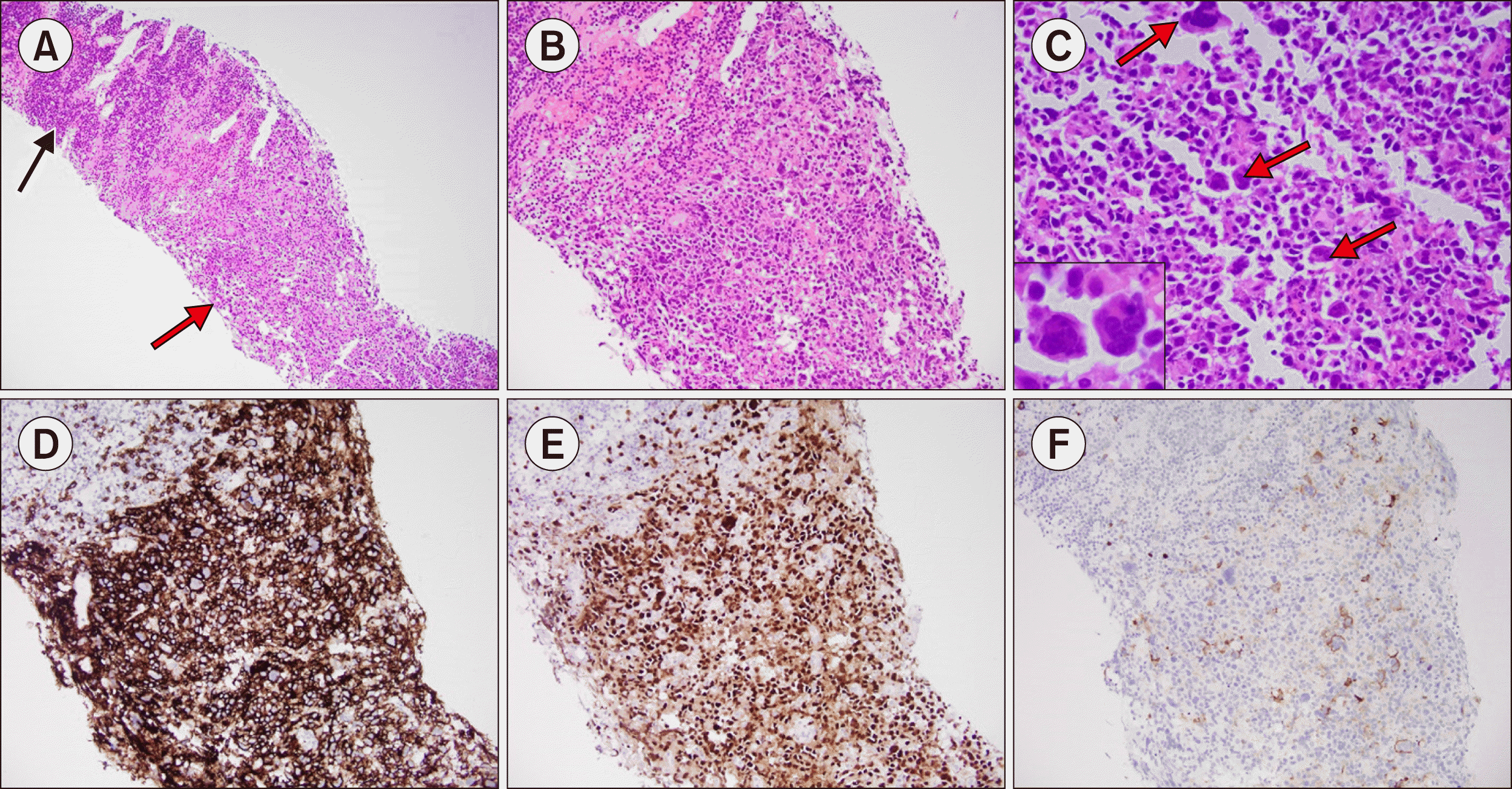
An elderly male without significant past medical history presented with cervical lymphadenopathy. Labs showed anemia (Hb 7.6 g/dL) and elevated WBC count (16×109/L) with neutrophilia. Limited core biopsy revealed partial nodal involvement by an overtly malignant proliferation with marked anaplasia including multinucleated forms (A, B) and appeared to display a somewhat cohesive pattern of growth suggestive of an epithelioid neoplasm. Flow cytometry showed no immunophenotypic evidence of lymphoma. The primary differential diagnosis based on these findings included a poorly-differentiated carcinoma versus melanoma, however, immunostains for keratin, Melan A and SOX10 were negative. CD45 was only performed subsequently due to receipt of the case for hematopathologist evaluation given the lymphadenopathy. Surprisingly, the anaplastic tumor cells (A ×40; B ×200; C ×400) were diffusely CD45-positive; subsequent immunostains revealed positivity for CD20 (D ×200), MUM1 (E ×200), BCL6, CD30 (subset, F ×200), BCL2, and MYC, diagnostic of diffuse large B-cell lymphoma (DLBCL) with anaplastic morphology (non-germinal center B-cell phenotype, double expressor-MYC+/BCL2+). The tumor was negative for CD10, ALK, cyclin D1, and EBV. Fluorescence in situ hybridization was negative for MYC gene rearrangement. Staging bone marrow was not performed. The patient expired at 8 weeks from diagnosis post-one cycle of chemotherapy. Anaplastic DLBCL is a rare morphologic variant and portends an aggressive clinical course compared to those DLBCL without anaplastic features. Flow cytometry may be negative as large B-cells may not survive processing, and morphology is key to establishing prompt diagnosis. This case highlights the histopathologic heterogeneity of anaplastic DLBCL, and underscores the importance of evaluation for a hematolymphoid neoplasm in cases with morphology suggestive of a poorly-differentiated malignancy.




 PDF
PDF Citation
Citation Print
Print


 XML Download
XML Download